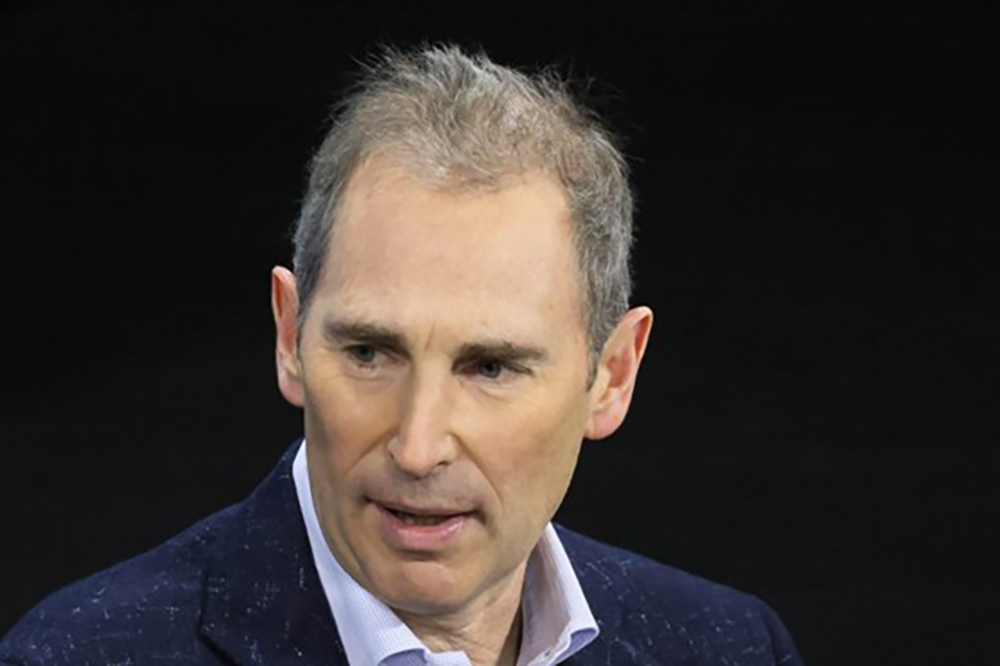 亚马逊(Amazon)首席执行官安迪·贾西(Andy Jassy)。图片来源:MICHAEL M. SANTIAGO/GETTY IMAGES
亚马逊(Amazon)首席执行官安迪·贾西(Andy Jassy)。图片来源:MICHAEL M. SANTIAGO/GETTY IMAGES电子商务也许能提高购物的便利性,但也有着大多数消费者从未察觉的阴暗面。
假如你在亚马逊上订购了一支电动牙刷作为父亲节礼物,并给自己买了两件衬衫。当你拆开包裹时,却发现电动牙刷无法充电,而且只有一件衬衫是合身的。于是,你决定退回不想要的衬衫和电动牙刷。
这类退货操作或许看起来很简单,而且对消费者来说通常是免费的。然而,零售商为了管理那些退回的商品却可能要付出昂贵的成本,以至于许多商品一经退回就直接被扔掉了。
2022年,退货给零售商造成了约8160亿美元的销售损失。这几乎相当于美国政府每年对公立学校投入的资金金额,而且将近两倍于2020年的退货成本。2022年,涉及运输和包装的退货过程还产生了约2400万吨的二氧化碳(全球变暖的罪魁祸首)排放量。
成本和二氧化碳排放的双重问题给零售商和地球环境带来了可持续性方面的难题。
作为供应链管理研究人员,我一直在关注零售业物流方面的进展。让我们来仔细探究一下装着被退商品的黑箱子里到底藏着哪些故事吧。
退货始于一趟数英里距离的运输
我们继续假设,你重新包装好不想要的衬衫和电动牙刷,把它们送到了与亚马逊签有免费退货协议的美国联合包裹运送服务公司(UPS)。下一步会怎样呢?
美国联合包裹运送服务公司会把被退商品运输到零售商专门处理退货的仓库。这个退货环节需要零售商承担费用(据估计,如果是一件50美元的商品,那么需承担其成本的66%),并且会在卡车和飞机运输商品数百英里的过程中产生二氧化碳排放。退回包裹中的塑料、纸张或硬纸板都将变成废物。
相比最初发货所需的时间,处理退货需要多花两三倍的时间——被退回的商品需要经过拆封、检查、重新包装和重新安排路线。这会导致公司的成本增加,特别是在劳动力市场紧缺的时候。因为劳动者需要人工拆开包裹、检查商品,然后再根据退货理由决定接下来如何处理。
重新入库和再次出售会进一步延长运输路程
如果仓库员工认为上述例子中的衬衫可以再次出售,那么衬衫就会被重新包装和送往另一个仓库。
当另一名消费者订购了这件衬衫时,员工就可以将它打包和发货了。
到店退货可以明显降低仓库管理和运输成本,但消费者可能并不方便开车到实体店。只有四分之一左右的顾客亲自到店退回网购商品。
如果修理费用低于商品价格,那就翻新商品
如果被退回的商品存在缺陷(比如上述例子中的电动牙刷),那么仓库员工可能会将它送回生产厂家修理和翻新。商品会被重新包装,装上卡车或者可能是飞机,以便被送回到生产厂家,这又会导致更多的二氧化碳排放。
如果电动牙刷可以被修好,翻新后的商品就能重新在消费者市场出售了——通常是以更低的价格。
翻新被退回的商品有助于形成闭环供应链,其中被退商品会得到重新利用,而不是作为废物被处理掉,因而这种做法比购买一件新的商品更有利于可持续发展。
然而,有时修理费用会高于商品再次售出可能成交的价格。当重新入库或翻新商品的成本较高时,对于零售商而言,扔掉被退回的商品也许反而更加划算。
被退回的商品往往最终都会进入垃圾填埋场
如果公司无法以经济实惠的方式重新出售被退回的衬衫或翻新电动牙刷,那么这些商品的处境将不容乐观。有些商品会被成批出售给折扣店。通常的情况是,被退回的商品直接被扔进垃圾填埋场,有时候也会被送往海外。
据退货技术平台Optoro估计,2019年,约有50亿磅因退货产生的垃圾被送往垃圾填埋场。2022年,因退货产生的垃圾有约95亿磅,几乎翻了一番。
免费退货的时代也许不会持续太久
过去,顾客若想通过邮寄退货,通常需要自掏腰包。自从亚马逊开始提供免费退货服务,并且在美国联合包裹运送服务公司或科尔百货(Kohl's)门店设置便捷的投递地点后,情况便发生了改变。其他零售商也纷纷效仿这一做法,与亚马逊展开竞争,许多零售商还将免费退货视为吸引回头客的一种方法。
不过,钟摆可能已经开始回摆了。2022年,收取退货运费的零售商比例从33%上升至41%。
零售商正在尝试通过其他一些方法来降低退货率及减少浪费和损失,而这些节约的成本最终又落回到消费者身上,导致消费者面临价格上涨。
有些零售商开始缩短退货期限、限制频繁退货操作或者不再提供免费退货服务。其他策略包括提供虚拟试衣间和更清晰的试衣指南,它们正如能够准确反映尺寸和颜色的高清照片和视频一样,有助于降低服装退货率。消费者如果能使用这些工具并注意尺寸,就可以帮助零售商减少与日俱增的气候足迹。(财富中文网)
西蒙娜·佩因科弗(Simone Peinkofer)是密歇根州立大学(Michigan State University)供应链管理系的助理教授。
本文依据知识共享许可协议转载自The Conversation。
译者:中慧言-刘嘉欢
电子商务也许能提高购物的便利性,但也有着大多数消费者从未察觉的阴暗面。
假如你在亚马逊上订购了一支电动牙刷作为父亲节礼物,并给自己买了两件衬衫。当你拆开包裹时,却发现电动牙刷无法充电,而且只有一件衬衫是合身的。于是,你决定退回不想要的衬衫和电动牙刷。
这类退货操作或许看起来很简单,而且对消费者来说通常是免费的。然而,零售商为了管理那些退回的商品却可能要付出昂贵的成本,以至于许多商品一经退回就直接被扔掉了。
2022年,退货给零售商造成了约8160亿美元的销售损失。这几乎相当于美国政府每年对公立学校投入的资金金额,而且将近两倍于2020年的退货成本。2022年,涉及运输和包装的退货过程还产生了约2400万吨的二氧化碳(全球变暖的罪魁祸首)排放量。
成本和二氧化碳排放的双重问题给零售商和地球环境带来了可持续性方面的难题。
作为供应链管理研究人员,我一直在关注零售业物流方面的进展。让我们来仔细探究一下装着被退商品的黑箱子里到底藏着哪些故事吧。
退货始于一趟数英里距离的运输
我们继续假设,你重新包装好不想要的衬衫和电动牙刷,把它们送到了与亚马逊签有免费退货协议的美国联合包裹运送服务公司(UPS)。下一步会怎样呢?
美国联合包裹运送服务公司会把被退商品运输到零售商专门处理退货的仓库。这个退货环节需要零售商承担费用(据估计,如果是一件50美元的商品,那么需承担其成本的66%),并且会在卡车和飞机运输商品数百英里的过程中产生二氧化碳排放。退回包裹中的塑料、纸张或硬纸板都将变成废物。
相比最初发货所需的时间,处理退货需要多花两三倍的时间——被退回的商品需要经过拆封、检查、重新包装和重新安排路线。这会导致公司的成本增加,特别是在劳动力市场紧缺的时候。因为劳动者需要人工拆开包裹、检查商品,然后再根据退货理由决定接下来如何处理。
重新入库和再次出售会进一步延长运输路程
如果仓库员工认为上述例子中的衬衫可以再次出售,那么衬衫就会被重新包装和送往另一个仓库。
当另一名消费者订购了这件衬衫时,员工就可以将它打包和发货了。
到店退货可以明显降低仓库管理和运输成本,但消费者可能并不方便开车到实体店。只有四分之一左右的顾客亲自到店退回网购商品。
如果修理费用低于商品价格,那就翻新商品
如果被退回的商品存在缺陷(比如上述例子中的电动牙刷),那么仓库员工可能会将它送回生产厂家修理和翻新。商品会被重新包装,装上卡车或者可能是飞机,以便被送回到生产厂家,这又会导致更多的二氧化碳排放。
如果电动牙刷可以被修好,翻新后的商品就能重新在消费者市场出售了——通常是以更低的价格。
翻新被退回的商品有助于形成闭环供应链,其中被退商品会得到重新利用,而不是作为废物被处理掉,因而这种做法比购买一件新的商品更有利于可持续发展。
然而,有时修理费用会高于商品再次售出可能成交的价格。当重新入库或翻新商品的成本较高时,对于零售商而言,扔掉被退回的商品也许反而更加划算。
被退回的商品往往最终都会进入垃圾填埋场
如果公司无法以经济实惠的方式重新出售被退回的衬衫或翻新电动牙刷,那么这些商品的处境将不容乐观。有些商品会被成批出售给折扣店。通常的情况是,被退回的商品直接被扔进垃圾填埋场,有时候也会被送往海外。
据退货技术平台Optoro估计,2019年,约有50亿磅因退货产生的垃圾被送往垃圾填埋场。2022年,因退货产生的垃圾有约95亿磅,几乎翻了一番。
免费退货的时代也许不会持续太久
过去,顾客若想通过邮寄退货,通常需要自掏腰包。自从亚马逊开始提供免费退货服务,并且在美国联合包裹运送服务公司或科尔百货(Kohl's)门店设置便捷的投递地点后,情况便发生了改变。其他零售商也纷纷效仿这一做法,与亚马逊展开竞争,许多零售商还将免费退货视为吸引回头客的一种方法。
不过,钟摆可能已经开始回摆了。2022年,收取退货运费的零售商比例从33%上升至41%。
零售商正在尝试通过其他一些方法来降低退货率及减少浪费和损失,而这些节约的成本最终又落回到消费者身上,导致消费者面临价格上涨。
有些零售商开始缩短退货期限、限制频繁退货操作或者不再提供免费退货服务。其他策略包括提供虚拟试衣间和更清晰的试衣指南,它们正如能够准确反映尺寸和颜色的高清照片和视频一样,有助于降低服装退货率。消费者如果能使用这些工具并注意尺寸,就可以帮助零售商减少与日俱增的气候足迹。(财富中文网)
西蒙娜·佩因科弗(Simone Peinkofer)是密歇根州立大学(Michigan State University)供应链管理系的助理教授。
本文依据知识共享许可协议转载自The Conversation。
译者:中慧言-刘嘉欢
E-commerce may make shopping more convenient, but it has a dark side that most consumers never see.
Say you order an electric toothbrush for Father’s Day and two shirts for yourself from Amazon. You unpack your order and discover that the electric toothbrush won’t charge and only one shirt fits you. So, you decide to return the unwanted shirt and the electric toothbrush.
Returns like this might seem simple, and often they’re free for the consumer. But managing those returns can get costly for retailers, so much so that many returned items are simply thrown out.
In 2022, returns cost retailers about $816 billion in lost sales. That’s nearly as much as the U.S. spent on public schools and almost twice the cost of returns in 2020. The return process, with transportation and packaging, also generated about 24 million metric tons of planet-warming carbon dioxide emissions in 2022.
Together, costs and emissions create a sustainability problem for retailers and the planet.
As a supply chain management researcher, I follow developments in retail logistics. Let’s take a closer look inside the black box of product returns.
Returns start with miles of transportation
So, you repackaged your unwanted shirt and the electric toothbrush and drove them to UPS, which has an agreement with Amazon for free returns. Now what?
UPS transports those items to the retailer’s warehouses dedicated to processing returns. This step of the process costs the retailer money – 66% of the cost of a $50 item by one estimate – and emits carbon dioxide as trucks and planes carry items hundreds of miles. The plastic, paper or cardboard from the return package becomes waste.
Processing a return takes two to three times longer than initially shipping the item – it has to be unpacked, inspected, repacked and rerouted. That adds more to the cost to the company, especially in a tight labor market. Workers have to manually unpack the items, inspect them and, based on the return reason, decide what will happen next.
Restocking and reselling means more miles
If a warehouse worker decides the shirt in our example can be resold, the shirt will be repackaged and sent to another warehouse.
Once another consumer orders the shirt, it will be ready to be packed and shipped.
In-store returns can significantly cut warehouse and transportation costs, but driving to a brick-and-mortar store might not be convenient for the consumer. Only about a quarter of online purchases are returned in person to the store.
Refurbishing, if repair costs less than the product
If the item is defective, like the electric toothbrush in our example, the warehouse worker might send it back to the manufacturer for fixing and refurbishing. It would be repackaged and loaded on a truck and possibly a plane to be sent to the manufacturer, leading to more carbon dioxide emissions.
If the electric toothbrush can be repaired, the refurbished product is ready to be sold into the consumer market again – often at a lower price.
Refurbishing returned products helps to achieve a closed-loop supply chain where products are reused rather than disposed of as waste, making the process more sustainable than buying a new item.
Sometimes, however, repairs cost more than the product can be resold for. When it is more expensive to restock or refurbish a product, it may be cheaper for the retailer to throw the item away.
Landfills are a common end for returns
If the company can’t resell the shirt or refurbish the electric toothbrush economically, the outlook for these items is grim. Some are sold in bulk to discount stores. Often, returned products simply end up in landfills, sometimes overseas.
In 2019, about 5 billion pounds of waste from returns were sent to landfills, according to an estimate by the return technology platform Optoro. By 2022, the estimated waste had nearly doubled to about 9.5 billion pounds.
Era of free returns might not last
In the past, customers who wanted to return items by mail were often expected to do so on their own dime. That changed after Amazon began offering free returns and providing easy-to-use drop-off locations at UPS or Kohl’s stores. Other retailers followed suit to compete, with many seeing free returns as a way to keep shoppers coming back.
But that pendulum may be starting to swing back. The percentage of retailers charging to ship returns increased from 33% to 41% in 2022.
Retailers are trying several other techniques to lower the return rate, waste and losses, which ultimately come back to consumers in the form of higher prices.
Some retailers have shortened the return window, limited frequented returns or stopped offering free returns. Other strategies include virtual dressing rooms and clearer fitting guides, which can help reduce clothing returns, as can high-quality photos and videos that reflect size and color accurately. If consumers use those tools and pay attention to sizing, they can help cut down on retail’s growing climate footprint.
Simone Peinkofer is Assistant Professor of Supply Chain Management, Michigan State University.
This article is republished from The Conversation under a Creative Commons license.






